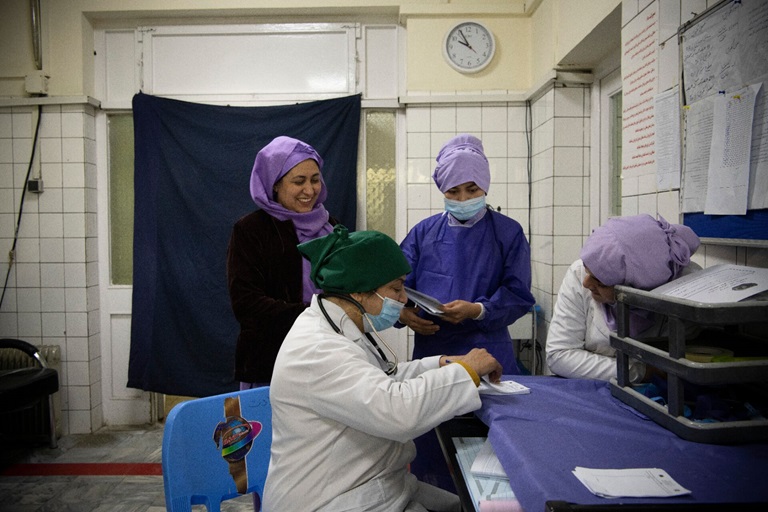
In a landmark move, leading reproductive health agencies have unveiled new guidelines aimed at transforming the prevention, diagnosis, and treatment of postpartum hemorrhage (PPH). Released today, these recommendations emphasize the critical need for earlier detection and swifter intervention, measures that could potentially save tens of thousands of women’s lives each year.
Postpartum hemorrhage, characterized by excessive bleeding following childbirth, affects millions of women annually and is responsible for nearly 45,000 deaths, making it one of the top causes of maternal mortality worldwide. Beyond fatalities, PPH can lead to severe long-term health issues, including major organ damage, hysterectomies, and psychological trauma.
“Postpartum hemorrhage is the most dangerous childbirth complication since it can escalate with such alarming speed. While it is not always predictable, deaths are preventable with the right care,” said Dr. Jeremy Farrar, Assistant Director-General for Health Promotion and Disease Prevention and Care. “These guidelines are designed to maximize impact where the burden is highest and resources are most limited – helping ensure more women survive childbirth and can return home safely to their families.”
New Diagnostic Criteria for Rapid Action
The guidelines, published by the World Health Organization (WHO), the International Federation of Gynecology and Obstetrics (FIGO), and the International Confederation of Midwives (ICM), introduce new diagnostic criteria for PPH detection. These are based on the largest study on the subject to date, also released today in The Lancet.
Many cases of PPH occur without identifiable risk factors, making early detection and rapid response crucial. In many healthcare settings, especially those with limited resources, delays in treatment can lead to devastating outcomes.
Traditionally, PPH has been diagnosed when blood loss exceeds 500 mL. However, the new guidelines advise action when blood loss reaches 300 mL, coupled with any abnormal vital signs. Clinicians are encouraged to closely monitor women post-birth and use calibrated drapes, which accurately measure blood loss, to ensure immediate action when necessary.
The guidelines recommend the immediate implementation of the MOTIVE bundle of actions upon diagnosing PPH, which includes:
- Massage of the uterus;
- Oxytocic drugs to stimulate contractions;
- Tranexamic acid (TXA) to reduce bleeding;
- Intravenous fluids;
- Vaginal and genital tract examination;
- Escalation of care if bleeding persists.
In rare instances where bleeding continues, effective interventions such as surgery or blood transfusion are recommended to stabilize the woman’s condition until further treatment is available.
“Women affected by PPH need care that is fast, feasible, effective and drives progress towards eliminating PPH-related deaths,” said Professor Anne Beatrice Kihara, President of FIGO. “These guidelines take a proactive approach of readiness, recognition and response. They are designed to ensure real-world impact – empowering health workers to deliver the right care, at the right time, and in a wide range of contexts.”
Reducing Risks Through Effective Prevention
The guidelines also underscore the significance of comprehensive antenatal and postnatal care to reduce critical risk factors such as anemia, which is prevalent in low- and lower-middle-income countries. Anemia increases the likelihood of PPH and worsens outcomes if it occurs. Recommendations for anemic mothers include daily oral iron and folate during pregnancy and intravenous iron transfusions when rapid correction is necessary, including after PPH or if oral therapy fails.
Moreover, the publication discourages unsafe practices such as routine episiotomies and promotes preventive techniques like perineal massage in late pregnancy to minimize trauma and severe bleeding post-birth.
During the third stage of labor, the guidelines advise administering a quality-assured uterotonic to support uterine contraction, preferably oxytocin or heat-stable carbetocin as an alternative. If intravenous options are unavailable and the cold chain is unreliable, misoprostol may be used as a last resort.
“Midwives know first-hand how quickly postpartum hemorrhage can escalate and cost lives,” said Professor Jacqueline Dunkley-Bent OBE, ICM’s Chief Midwife. “These guidelines are a game-changer. But to end preventable deaths from PPH, we need more than evidence and protocols. We call on governments, health systems, donors, and partners to step up, adopt these recommendations, adopt them quickly, and invest in midwives and maternal care so that postpartum hemorrhage becomes a tragedy of the past.”
Implementation and Future Steps
The guidelines are accompanied by a comprehensive suite of training and implementation resources, developed in collaboration with partners including UNFPA. These tools include practical modules for frontline health workers, national-level guides for introducing new practices, and simulation-based training to enhance emergency response capabilities.
The announcement comes at a critical time as global health systems strive to improve maternal care and reduce preventable deaths. The success of these guidelines will depend significantly on the commitment of governments and healthcare providers to adopt and implement the recommendations swiftly and effectively.
As the world continues to grapple with maternal health challenges, these guidelines offer a beacon of hope, promising to transform the landscape of maternal care and ensure safer childbirth experiences for women worldwide.






